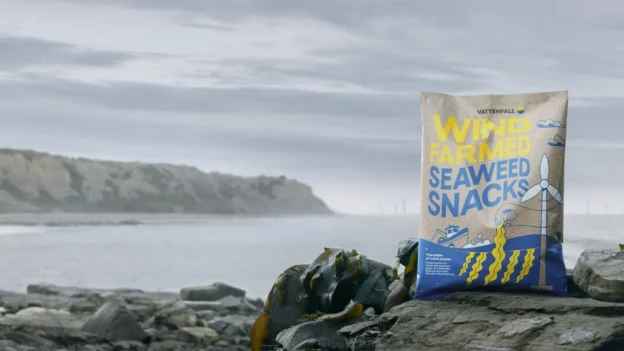The Vesterhav Syd offshore wind farm, located off the coast of Denmark, is one of the sites where Vattenfall is implementing an innovative solution: the shared use of offshore infrastructure for the simultaneous production of renewable energy and sustainable food.
Through the WIN@sea project, the company is studying how to take advantage of the space occupied by wind turbines. wind turbines to cultivate edible algae for food production.
Algae grow in suspended lines between buoys. Source: Vattenfall
The project, led by researcher Annette Bruhn of Aarhus University, proposes to transform electricity generation facilities into marine cultivation platforms. With support from Vattenfall, cultivation systems have been deployed at the Kriegers Flak and Vesterhav Syd offshore farms.
Bruhn explains that the objective is to maximize the use of areas already intervened by human infrastructure. This reduces the environmental impact on other areas of the sea and explores a sustainable path for food production.
Seaweed snacks: How is it possible?
Although growing conditions are not optimal everywhere, especially at Kriegers Flak because of its low salinity, trials have shown encouraging results. In the fall, new cultivation structures will be installed at Vesterhav Syd, where the North Sea water offers a more conducive environment.
The cultivated biomass is transformed into algae snacks. These sustainable snacks have gained visibility thanks to Samuel L. Jackson, actor and former marine biology student, who stars in Vattenfall’s campaign highlighting their taste as a “real gourmet delight”.
The company reported on its website that the snacks are not for sale.
Seaweed is rich in vitamins and nutrients. Source: Vattenfall
Environmental impact and operating efficiency
In addition to generating clean energyIn addition to generating clean energy, marine parks collect data on biodiversity and water quality. Algae, for their part, absorb CO₂ and excess nutrients, helping to restore ecological balance.
This synergy between energy and food also optimizes logistical resources: vessels, crew and maintenance can be shared for both purposes.
The WIN@sea team is working on food safety models, life cycle analysis and scalability. The goal is to demonstrate that it is feasible to integrate energy and food production in the same marine space without compromising the environment.

Source and photos: Vattenfall

